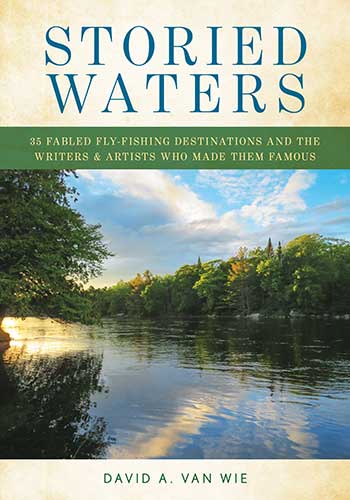The Twisted Rivers of Northern New Hampshire

The Diamond River is fast and free after exiting the gorge below the confluence of the Swift and Dead Diamond Rivers.
“The young Canadian, who could not have been more than fifteen, had hesitated too long. For a frozen moment, his feet had stopped moving on the floating logs in the basin above the river bend; he’d slipped entirely underwater before anyone could grab his outstretched hand. One of the loggers had reached for the youth’s long hair; the older man’s fingers groped around in the frigid water, which was thick, almost soupy, with sloughed-off bark. Then two logs collided hard on the would-be rescuer’s arm, breaking his wrist. The carpet of moving logs had completely closed over the young Canadian, who never surfaced….”
—John Irving, Last Night in Twisted River (2009)
Tuesday and Wednesday, June 13 & 14
The ghosts of the log-drive era are everywhere in the north woods of New England. I’m not talking about ghostly spirits, although there may be some of those, but more the physical evidence left in the woods and along the streams and rivers: remnants of old dams; stone-filled cribs from abandoned log booms; cellar holes, stoves, and junk piles from logging camps; holes drilled into rock ledge and steel pins that once held log booms. The woods of northern New Hampshire were for many years filled with logging camps and thousands of rugged men who manhandled the logs to mills in Berlin and Gorham from the 1800s through the 1960s.
The grim opening to John Irving’s novel Last Night in Twisted River evokes the last years of those mighty log drives in the upper Androscoggin River basin. Starting in 1954 in Coos County, New Hampshire, near Milan and Errol in the fictional town of Twisted River, Irving’s story follows the life of Danny Baciagalupo, a twelve-year- old boy whose father was a logging-camp cook. After opening with the tragic demise of young Angel, the book is a meandering tale of Danny’s life through “a world of accidents,” ultimately ending back at Twisted River some fifty years later.
The deaths of Angel Pope and other memorable characters in the book symbolize the passing of an era. Danny’s guardian angel, veteran river driver Ketchum, evolves through the story from a wild, unrefined yet big-hearted character during Danny’s youth to a tamer, more civilized old-timer living outside of Errol until 2001. In much the same way that Ketchum slowly and reluctantly changes, life in the north woods has softened with the encroachment of cell phones, satellite dishes, and ATVs, while still clinging to its wild spirit.
The next destination of my own meandering trip was the Second College Grant, a 27,000-acre forest reserve owned by Dartmouth College, where I have been fishing with six classmates from Dartmouth (class of 1979) each June for twenty-five years. On my way to the Grant, I would drive through Milan and Errol, crossing over the fictional Twisted River (somewhere) to get there. I would be meeting close friends for several days in a remote cabin at the confluence of the Swift and Dead Diamond Rivers, either of which could very well be the Twisted River in Irving’s tale.
Last Night in Twisted River is by no means a fishing story. The only part that comes close is when Danny fishes Angel’s waterlogged body out of the river, covered with leeches. And yet, Irving’s novel captures much of what I have sensed while fishing the Swift Diamond and Dead Diamond Rivers over the decades. Standing up to my knees, casting peacefully in the quiet of a June evening, I conjure images of the river hogs who lived and often died during the spring log drives when the water was a raging torrent, well up over my head and the steep banks behind me.
I won’t go into too much detail about my annual gatherings with “the Boys of the Grant” as we call ourselves, as there is an entire book about our fly-fishing adventures cowritten by all seven of us. If you’ve read The Confluence, you know our stories set among these beautiful hills and waters. You also know the history of the Dartmouth Grant— how the land was granted to Dartmouth College in 1809 to provide income for the fledgling college and scholarships for New Hampshire residents.
The first roads were built in the Grant during the 1940s, and a few cabins were constructed in the 1950s and ’60s to allow better access for timber management, hunting, and fishing. Today, the college manages the Grant for timber, recreation, wildlife, and scientific research. Eleven cabins, scattered across the ten-mile- by- six- mile tract, are available for rent by students, alumni, and employees of the college.
In one chapter in The Confluence, I describe the Grant as “An Eddy in Time”: “From the first, I relished the Grant’s timelessness and was fascinated by its history, from ancient time when native peoples inhabited this area to the days of log drives and the camps that supported them.”
During the late 1800s and first half of the twentieth century, a sizeable community of men and women lived in logging camps in the Grant along the Swift and Dead Diamond Rivers, but the forest has largely reclaimed the land where those camps used to be. “Time and the trees have wiped away most of the impact on the landscape,” except for some foundations, rough roads, and rusting relics hidden here and there in the woods. When we come back to the Grant year after year, I love that the wild rivers and the weather and the fishing are never the same. And I love that there is always a new experience when we visit.












